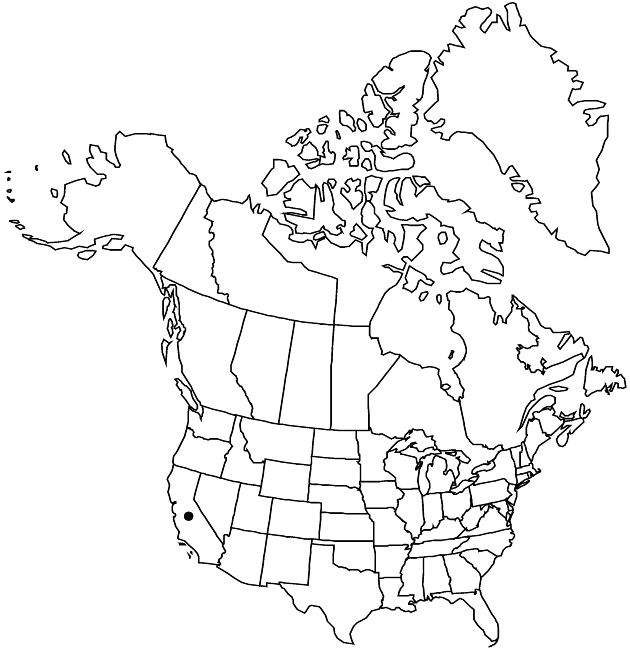Deinandra lobbii
Fl. Francisc. 4: 425. 1897.
Annuals, 5–70 cm. Stems ± solid. Leaves: proximal blades pinnatifid to toothed, faces hispid-hirsute, sometimes sessile- or short-stipitate-glandular. Heads in paniculiform arrays. Bracts subtending heads overlapping proximal 0–1/2 of each involucre or not. Phyllaries ± evenly sessile- or short-stipitate-glandular, including margins and apices, and with pustule-based hairs, at least on midribs. Paleae in 1 series. Ray florets 3(–4); laminae deep yellow, 3–5 mm. Disc florets 3(–4), all or mostly functionally staminate; anthers reddish to dark purple. Pappi of (4–)6–8(–12) quadrate or oblong to lance-linear, fimbriate to laciniate scales 0.5–1 mm. 2n = 22.
Phenology: Flowering May–Dec.
Habitat: Grasslands, open woodlands, sagebrush scrub, disturbed sites, often in sandy or clayey soils
Elevation: 0–700(–1800) m
Discussion
Deinandra lobbii occurs on hills and flats of the northern South Coast Ranges and San Francisco Bay area and is disjunct in northeastern California, where putatively introduced. Populations in northeastern California occur at higher elevations than elsewhere (1000–1800 m).
Selected References
None.
